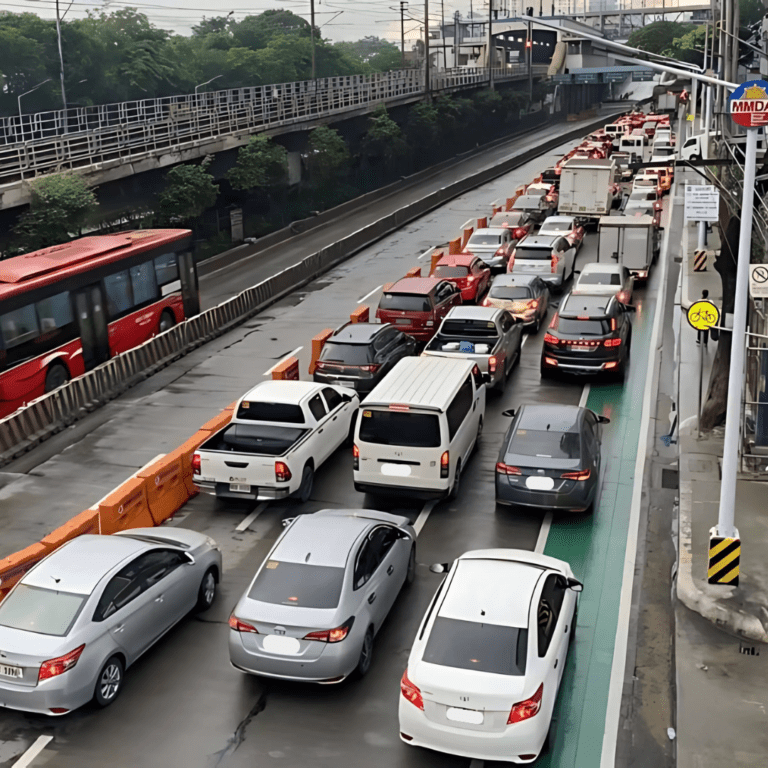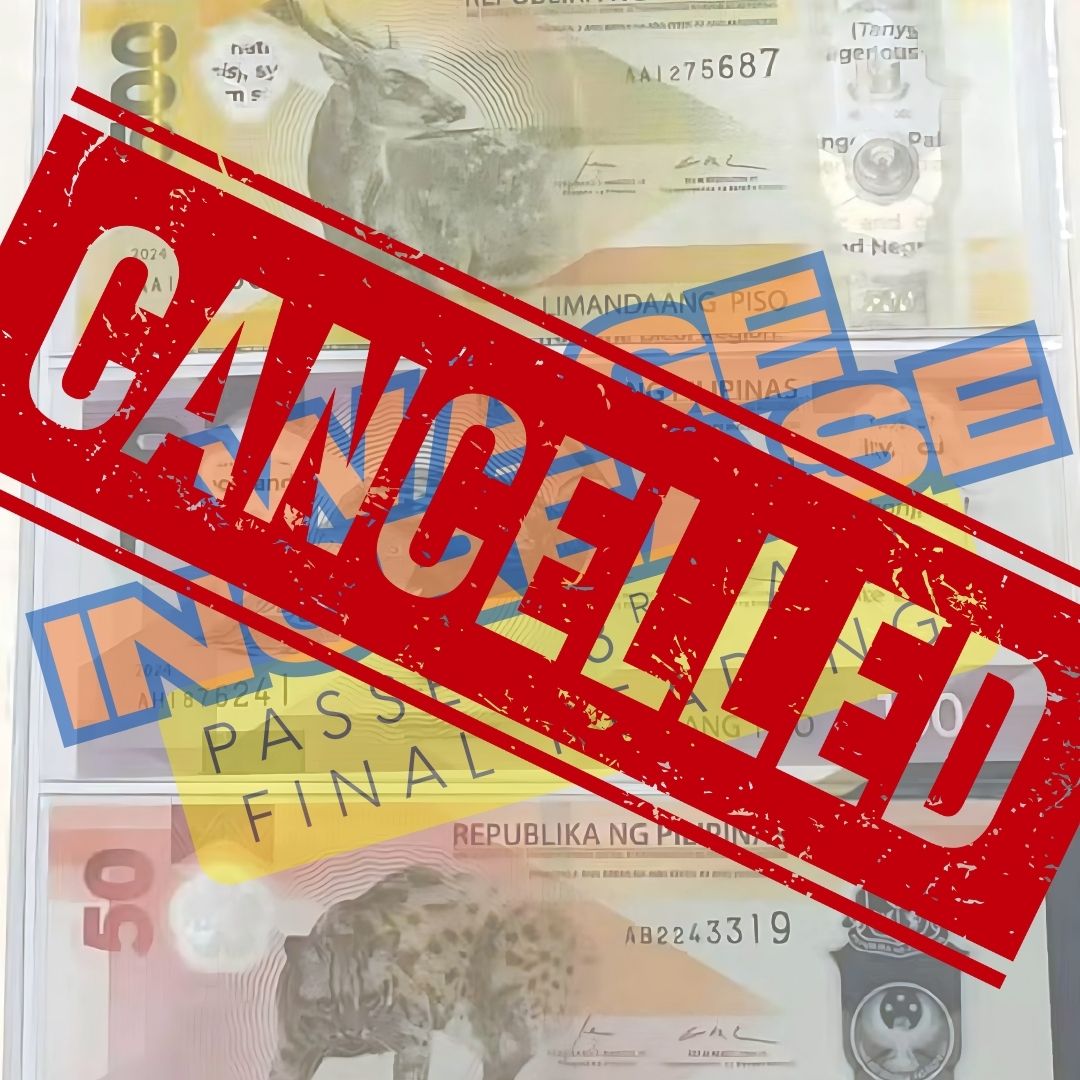The EDSA Bus Carousel, implemented as a dedicated bus rapid transit (BRT) system along Metro Manila’s busiest highway, has transformed the way commuters travel through the metropolis. Initially launched in response to the challenges of urban congestion and the need for efficient public transport, the system has received mixed reactions. While many praise its efficiency, others criticize its impact on private vehicles and the overall flow of traffic on EDSA. This article takes an in-depth look at the benefits and drawbacks of the EDSA Bus Carousel and how it affects both commuters and private vehicle owners.
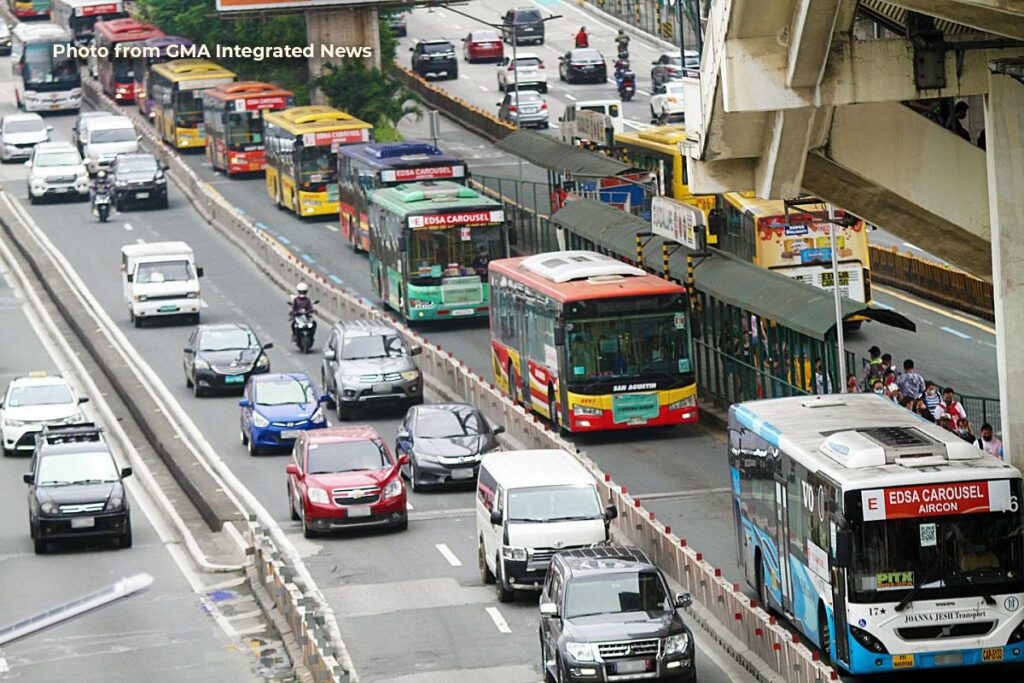
The Pros of the EDSA Bus Carousel
1. Improved Commuter Efficiency and Travel Time
One of the most significant benefits of the EDSA Bus Carousel is the reduction in travel time for commuters. With dedicated lanes, buses can bypass congestion and move at a more predictable pace. Prior to its implementation, buses had to compete with private vehicles, leading to erratic travel times and frequent delays.
A study by the Department of Transportation (DOTr) indicated that travel time from Monumento to PITX, which could previously take over two hours, has been reduced to an average of 60 minutes during peak hours (DOTr, 2023).
2. Increased Passenger Capacity and Accessibility
With higher-capacity buses operating at regular intervals, the system accommodates thousands of commuters daily. The structured pickup and drop-off stations provide a more organized and safer boarding experience compared to the previous system, where buses stopped anywhere along EDSA.
3. Lower Commuter Costs
Since its introduction, the EDSA Bus Carousel has maintained an affordable fare structure. As of 2023, the government subsidized fares for a period, making it an attractive option for daily commuters who would otherwise spend significantly more on jeepneys or UV Express shuttles.
4. Reduction of Undisciplined Bus Operations
Before the EDSA Bus Carousel, “colorum” buses and reckless drivers contributed to chaos and congestion. The implementation of a structured system with designated stops and limited operators helped curb these practices, leading to a safer, more reliable commuting experience.
5. Potential Environmental Benefits
By streamlining public transport along EDSA, the bus carousel helps reduce the number of individual vehicles on the road, potentially lowering overall carbon emissions. A study by the Metro Manila Development Authority (MMDA) suggests that a single full-capacity bus can replace 40 to 50 cars, contributing to reduced pollution levels in the city (MMDA, 2023).
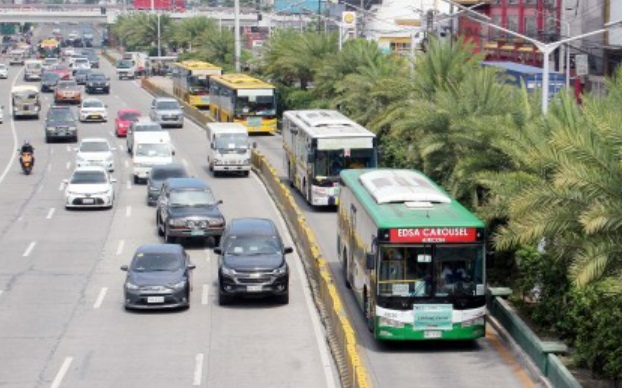
The Cons of the EDSA Bus Carousel
1. Increased Traffic for Private Vehicles
One of the biggest criticisms from private vehicle owners is the impact of the dedicated bus lane on overall road capacity. By allocating an entire lane to buses, other vehicles are forced into fewer lanes, worsening congestion. This issue is particularly evident during rush hours when thousands of cars, motorcycles, and trucks are squeezed into limited space.
A report by the Japan International Cooperation Agency (JICA) highlighted that EDSA’s daily traffic congestion costs the Philippine economy P3.5 billion in lost productivity (JICA, 2023). The reallocation of road space for the bus carousel may have exacerbated this economic drain for private car users.
2. Lane Enforcement Issues
Despite the dedicated lanes, enforcement remains a challenge. Motorcycles and even private cars are sometimes seen encroaching into the bus lanes, disrupting the system’s efficiency. Additionally, some bus drivers fail to follow speed limits, causing safety concerns.
3. Accessibility Issues for Certain Commuters
While the structured bus stops improve efficiency, they also pose a challenge for elderly and disabled passengers. Some stations are not yet equipped with ramps or elevators, making accessibility a concern. Without proper infrastructure improvements, certain groups of commuters may find it difficult to use the system.
4. Long Queues and Overcrowding
While the bus carousel has improved transport efficiency, demand often exceeds supply, leading to long queues at key terminals such as Monumento, Ayala, and PITX. Overcrowding during peak hours diminishes passenger comfort, sometimes making the experience comparable to the MRT during rush hour.
5. Unclear Long-Term Financial Sustainability
Although the system has been subsidized, there are concerns about long-term financial sustainability. If government subsidies are reduced or removed, fare increases may be inevitable, affecting lower-income commuters who rely on the service daily.
Impact on Private Vehicle Owners
Private vehicle owners, especially those who drive daily along EDSA, have had to adjust to the new traffic patterns caused by the bus carousel. The dedicated bus lane effectively reduces available space for cars, resulting in slower travel times for those who rely on private transport. Some drivers argue that while public commuters benefit, the overall efficiency of EDSA for private motorists has worsened.
Moreover, the difficulty in changing lanes due to the presence of concrete barriers has led to increased instances of accidents and traffic bottlenecks, particularly in areas where merging is required.
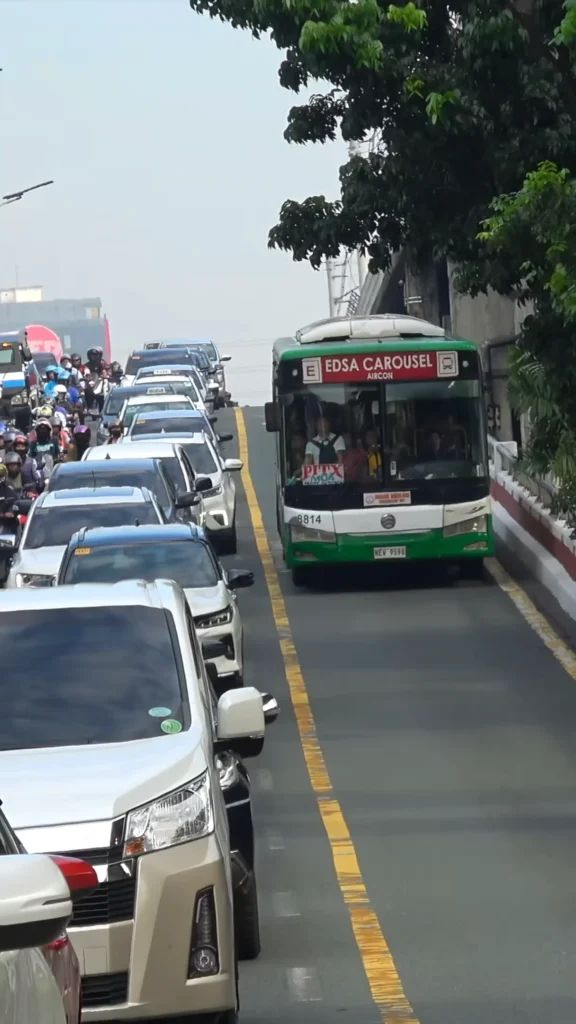
Impact on Commuters
For daily commuters, the EDSA Bus Carousel has been both a blessing and a challenge. Those who can secure a seat on a bus experience faster travel times and lower fares, making it a preferred choice over alternatives like jeepneys or MRT. However, overcrowding and long waiting times remain significant issues, particularly during peak hours.
A survey conducted by the University of the Philippines National Center for Transportation Studies (UP-NCTS) found that 67% of commuters preferred the bus carousel over other modes of transportation but cited overcrowding as a primary complaint (UP-NCTS, 2023).
Potential Effects if the Bus Carousel is Removed
If the EDSA Bus Carousel were to be removed, it could have several significant effects on both commuters and traffic conditions. Public transportation would likely become more chaotic, as buses would once again compete with private vehicles for road space, leading to longer travel times. The absence of structured stops might also encourage undisciplined bus operations, increasing the risk of accidents and congestion.
For private vehicle owners, the removal of the bus carousel might initially seem beneficial due to the availability of additional lanes. However, without a dedicated lane for buses, congestion could worsen as more buses stop haphazardly along EDSA, obstructing the flow of traffic. Additionally, the lack of an efficient mass transport system could push more people to rely on private cars, further exacerbating congestion.
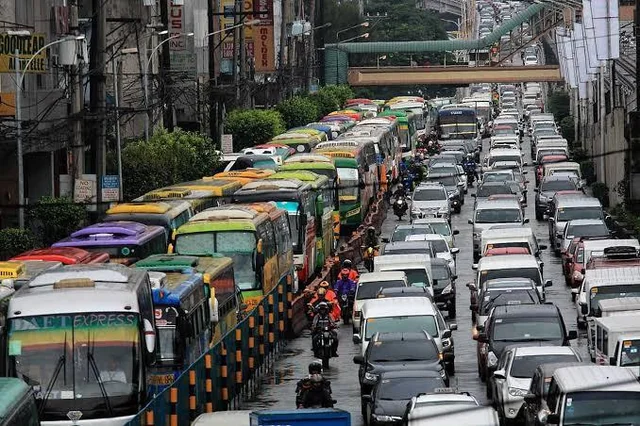
Conclusion: Is the EDSA Bus Carousel a Success?
The EDSA Bus Carousel has undeniably improved certain aspects of Metro Manila’s public transport system, particularly in terms of efficiency and affordability for commuters. However, its impact on private vehicle owners and overall traffic congestion remains a subject of debate.
For the system to reach its full potential, the government must address enforcement issues, expand capacity to meet demand, and improve accessibility for all passengers. Additionally, efforts to integrate other modes of public transportation, such as MRT and PNR, could further enhance the effectiveness of the system.
Ultimately, whether the EDSA Bus Carousel is a game-changer or a traffic nightmare depends on how well authorities manage its long-term sustainability and mitigate its unintended consequences.
For more updated news check out this link!


